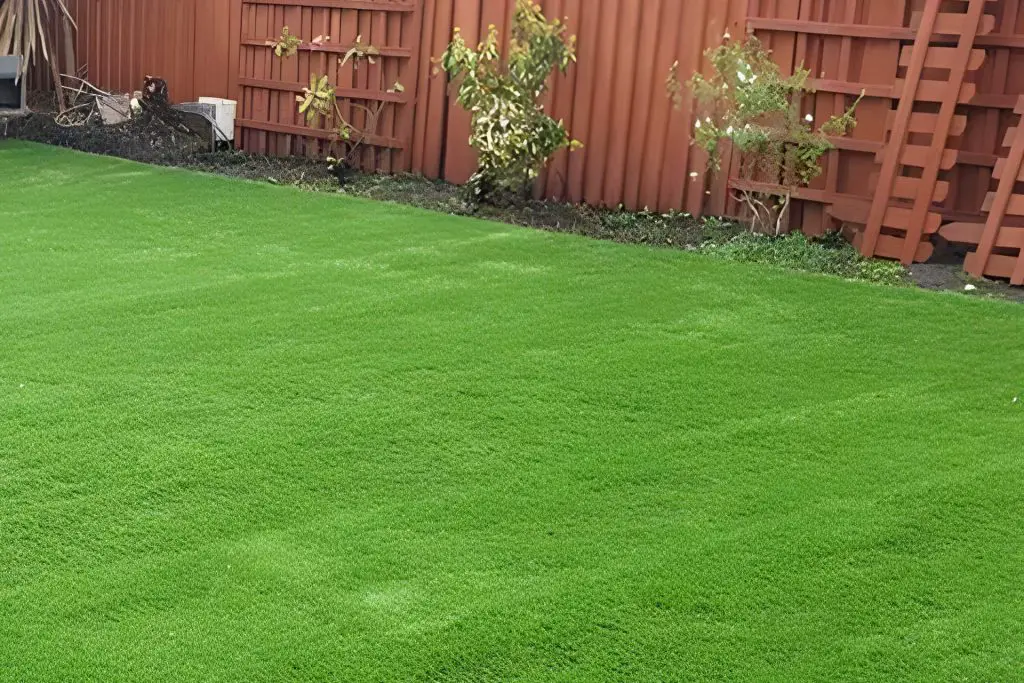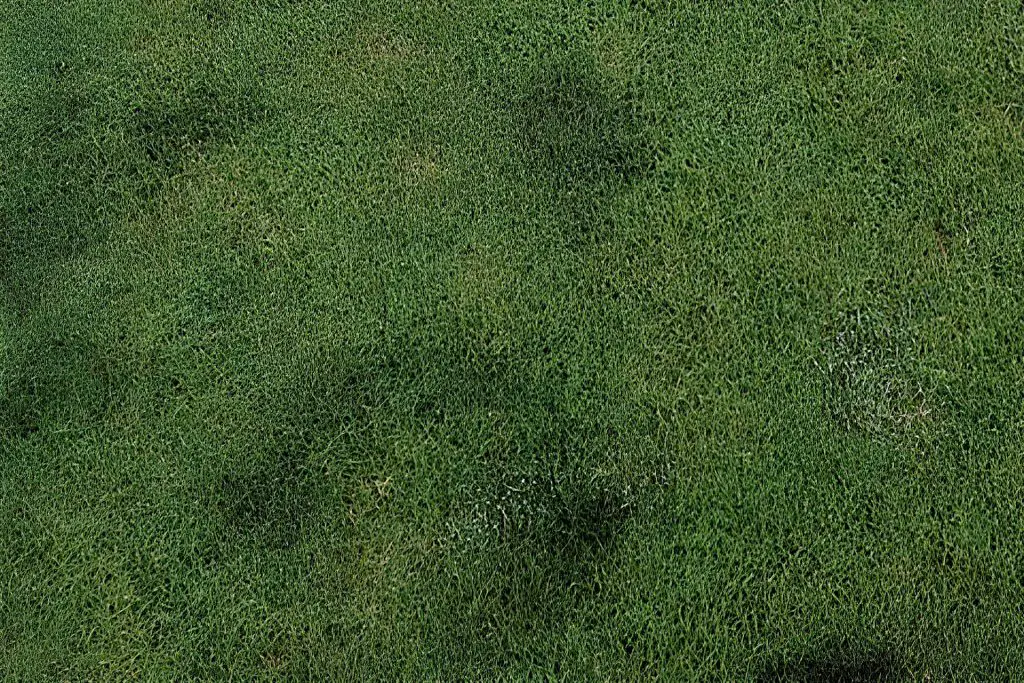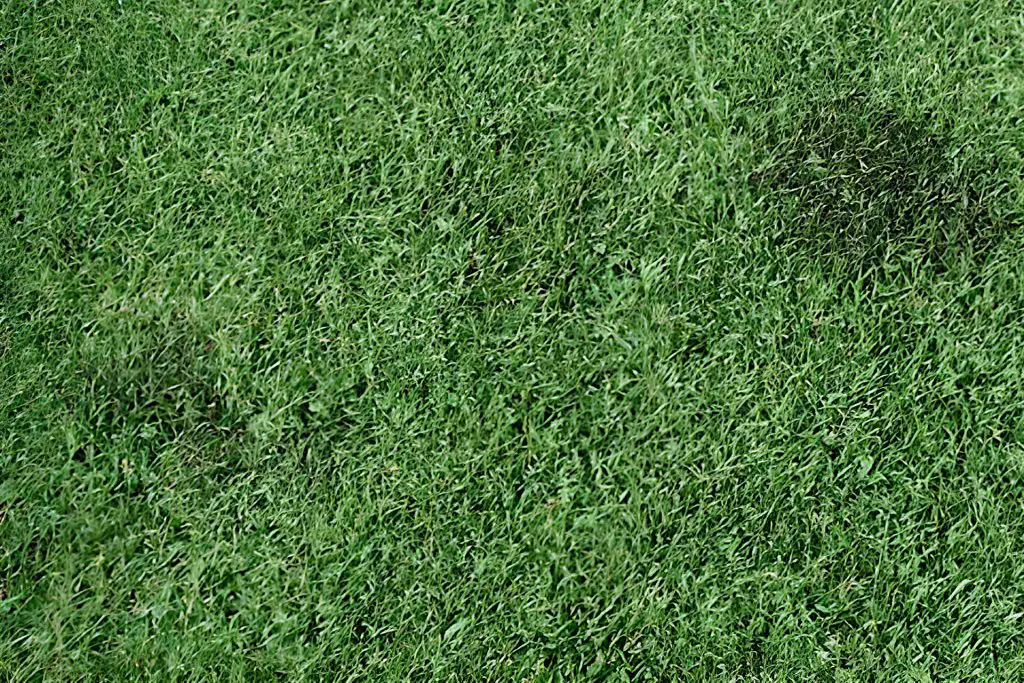Does Artificial Grass Get Mold? Here’s What You Need to Know
Mold is one of those annoying things that we just don’t want to deal with. We try to keep it away from our homes, but it always seems to find a way into our lives. Because of the nature of the product, many homeowners are concerned about the possibility of mold developing on their artificial turf.
In this article, we will look at the possibility of mold developing on your artificial lawn and what to do if it does. Prevention though is relatively straightforward. There are measures you can take to avoid getting mold, especially if you live in an area with high humidity.
While mold can occur on any type of grass, artificial grass is less likely to develop mold than natural grass. However, if mold does occur, there are both commercial and homemade cleaning solutions that can remove it.
Can Artificial Grass Get Mold?

It’s true, artificial turf is not immune to mold growth. Indeed, if conditions are right, mold can grow on any type of lawn, artificial or not.
Mold loves moisture and wet conditions, and can reproduce quickly through spores. Once it attaches to your grass, it can be very awkward to get rid of.
This is because turf bases are often made of moisture-attracting materials, like silicon sand. While mold growth is not as common on artificial turf as it is on natural lawns, it is still possible given the right conditions.
If you’re concerned about mold growth on your artificial turf, the best thing you can do is to keep the area well-ventilated and dry. If you live in an area with high humidity, you may also want to consider using a mold-inhibiting solution on your turf.
Black Mold on Artificial Grass
Black mold in the right conditions can be a problem with artificial turf. It is one of the most common varieties of fungus found on artificial grass, and if not treated can spread quickly as it thrives in warm humid weather.
It tends to initially appear as slight discoloration of your turf but over the days will turn into black patches and start to spread. The appearance of black patches usually indicates that there is quite a large fungus infestation and should be dealt with soon as the spores if breathed in can cause health problems.
The cause beyond climatic conditions that make it conducive to spread can usually be put down to an inadequate cleaning schedule during humid weather. Although artificial turf doesn’t require a huge amount of maintenance, a proper cleaning schedule, based on use and climatic conditions, should always be adhered to.
Causes of Mold Growth On Turf

Mold, moss, and algae can sometimes grow on artificial turf, despite the fact that synthetic turf fibers and infill are designed to resist the growth of mold. The reason why mold, moss, or algae may appear on artificial turf over time is that organic material can filter into the infill and create favorable conditions for growth (dampness, humidity, and shade). In general, mold growth is likely to be restricted to less heavily used areas of the field.
Many manufacturers offer products that can remove such growth; any non-oil-based product should be effective. However, it can be difficult to remove mold, moss, or algae once it has become established. Spores will persist even if all living organisms are killed and removed. As a result, successful treatment may necessitate multiple applications. In the worst-case scenario, eradication may require infill removal, sterilization, and replacement.
Poor Quality Synthetic Fibers
When artificial turf is made, the quality of the fibers plays a big role in how well it will resist mold growth. If you use turf that is made with poor-quality fibers, it’s more likely to absorb moisture. And since mold thrives in wet conditions, this increased moisture absorption can lead to mold growth.
Moisture Between Synthetic Fibers
As a homeowner, you want to keep your artificial turf in the best condition possible. This means regular watering and cleaning of your turf, as well as maintaining a good level of humidity. However, too much water can actually encourage the growth of mold.
Mold loves moisture, and if there is an excess of water between the synthetic grass blades, mold will start to grow. This is why it’s important to not only water your turf regularly, but also to ensure that the turf is able to drain properly. If water is not able to drain properly, it will start to pool and this will create the perfect environment for mold to grow.
While it is important to keep your turf clean, an excess of water can lead to the accumulation of moisture between the turf fibers. This moisture provides the ideal conditions for mold growth.
Poor Drainage
If you’re not careful when installing your artificial turf, you could end up with a poorly installed drainage system. This can lead to water pooling on the surface of your turf, which encourages the growth of mold.
To avoid this, make sure that your turf is installed correctly and that the drainage system is functioning properly. This will help to keep your turf looking its best and prevent the growth of mold.
It is recommended that an artificial lawn should be installed over a properly draining base. The artificial grass should sit directly on top of a stone aggregate base, below which a series of field or collector pipes run to carry away water. Alternatively, you should look to install on top of ‘air-grid’ tiles as they provide pace for the water to drain away.
You should avoid putting it on top of wood planks or plywood because both materials can trap moisture.
Pet Waste Not Dealt With
If you own pets and they frequently urinate or leave feces on your artificial turf and this goes uncleaned, the bacteria present can cause mold to develop on the turf. As we have mentioned as well as being unsightly the spores from the mold can be unhealthy for the pets and your family if breathed in.
It’s important to have a system whereby you clean up your pet’s waste each day to prevent the growth of mold. You can do this by using a pet waste bag or scoop and hosing down the area where your pet relieved themselves.
How to Prevent Mold Growth on Artificial Grass

Mold growth on artificial grass is rare, but it does happen. If you notice signs of mold on your lawn, take action immediately. Prevention though is usually the best solution to stopping mold from appearing.
Prevention starts at the point of purchase. It is a false economy to go for the cheapest option. If you want a hassle-free life, install high-quality mold-resistant artificial grass with a proper drainage base.
The second part is to have a proper maintenance schedule and ensure the water doesn’t pool or remain in between the synthetic fibers for extended periods.
Brush the Turf Regularly
If your artificial lawn is constructed from high-quality synthetic turf mold-free fibers and is installed on adequate drainage yet you still find the odd patch of mold, the best course of action would be to put in increase the maintenance schedule that you use to maintain the turf.
Regularly brushing the fibers of your turf will remove any mold that may have been present, and continued regular brushing will prevent mold from growing in the future.
Rinse Away
Over and above your general maintenance you should also schedule a regular deep clean, possibly one every two to three months, of your artificial turf lawn. Not only will this remove any lingering bacteria but will help keep your lawn looking great and extend its life.
A deep clean involves thoroughly soaking the synthetic fibers with water and a biodegradable cleaner. This will ensure that there is no residue left behind. Once done, rinse off the excess water and allow the lawn to dry out naturally.
To Treat Moss or Mould:
There are a considerable number of options when it comes to cleaning products for your artificial turf, both commercial and homemade.
Commercial Mold Cleaners and Treatments
Many manufacturers offer products that can remove mold and mildew growth, although any non-oil-based product should be effective. Simply apply a thin layer of the product directly onto the affected areas and allow it to work to the manufacturer’s instructions.
However, it can be difficult to remove mold, moss, or algae once it has become established. Spores will persist even if all living organisms are killed and removed. As a result, successful treatment may necessitate multiple applications. In the worst-case scenario, eradication may require infill removal, sterilization, and replacement.
Homemade Treatments Vinegar and Bleach Mix
With artificial turf, you will find that several homemade cleaning solutions can to as good a job as their commercial cousins. Vinegar, bicarbonate of soda, and bleach will all do a great job in shifting mold with vinegar being particularly effective at killing mold spores
Either dilute bleach in water and apply it to the affected area or make a solution of vinegar and water with a ratio of one part vinegar to three parts water. After allowing the solutions to sit for ten to fifteen minutes, scrub the turf blades with a brush that has soft bristles while holding them in an upright position. After giving the area a thorough rinsing with clean water from the garden hose, you should then allow it to completely dry.
Summary: Does Artificial Grass Get Mold?
Mold is unsightly and thankfully fairly rare on synthetic grass as most modern fibers are designed to prevent it. Indeed you are much more likely to find it on natural lawns. However, if you do live in humid climatic conditions where mold likes to thrive it can occur and when it does it should be dealt with straight away.
Fortunately, removing it is fairly straightforward with a number of commercial products available. However, it might be worth trying some homemade cleaning solutions such as diluted household bleach and water or a vinegar solution, which is particularly effective at killing mold spores. These solutions method usually takes care of most cases.
